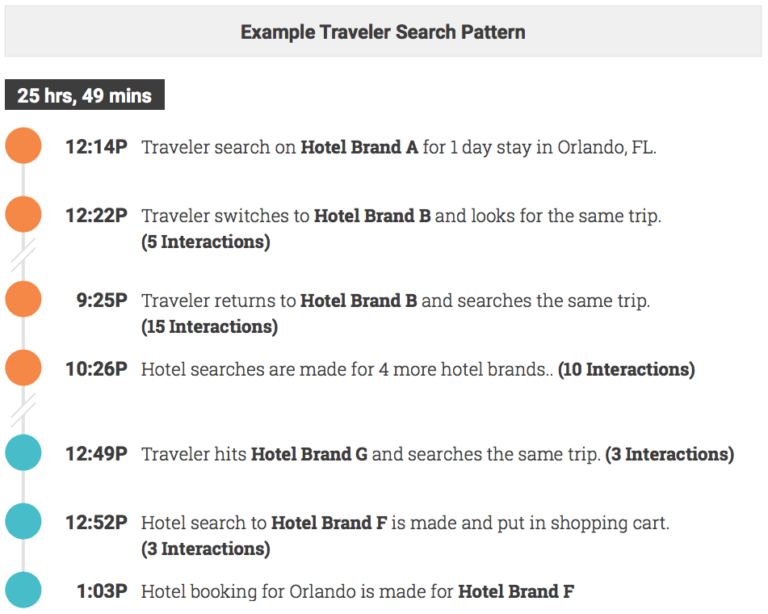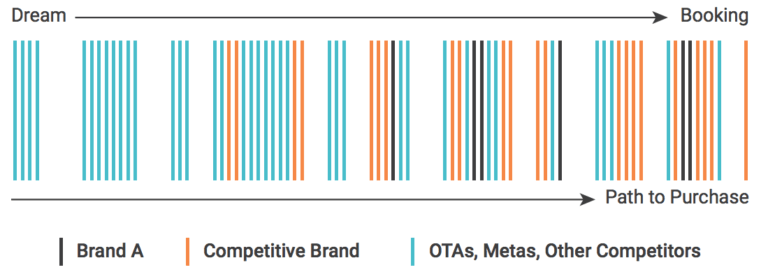
As the number of people traveling continues to increases every year, hoteliers are constantly competing to win their bookings.
NB: This is an article from Sojern
According to the latest UNWTO World Tourism Barometer, international tourist arrivals grew to 1.3 million in 2017 and continued into 2018 at a rate of 4%-5%. In order to make sure to influence a traveler’s booking journey, it’s important for brands to be in front of them when they are online by using an always-on advertising approach.
Hoteliers can optimize their advertising campaigns to reach these travelers in the moments that matter, especially before travelers book elsewhere, with real-time campaign monitoring and management.
In Sojern’s 2018 Hotel Insights Report, we look under the hood into the hotel booking patterns of travelers around the globe and supercharge solutions hoteliers can use to inspire travelers.
Seeing the Complete Picture of a Traveler’s Path to Purchase
The traveler’s path to purchase varies not only person to person but from trip to trip, so it’s important that hotel marketers use an always-on approach to place those heads in their beds. Without the right messaging at the right time, travelers may zoom past your brand without a second thought.
Let’s take a moment to look at one anonymous traveler’s path to purchase for an overnight stay for two in Orlando, FL. In just 25 hours, the traveler looked at six different hotels with more than 30 different searches and ended up booking the day after the initial search.

During their lunch, they made their initial searches, which included only two brands (Brand A and Brand B). Then, they picked up the search later on that night—adding four more brands to their search for Brand B while leaving Brand A out of the consideration set. They again picked up the search in the morning by adding one additional brand—ultimately, booking with the last brand they searched.
Reach the Finish Line by Retargeting with Real-Time Intent Data
Past the initial touch point to Brand A, the traveler seemingly forgot about the hotel when researching more options. Brand A missed out on the traveler’s business because they did not have a complete picture of the traveler’s searching behavior. By monitoring search intent in real-time throughout a campaign across not only their own website but all search channels, Brand A could have seen the complete picture of a traveler’s path to purchase.
With a real-time campaign monitoring, Brand A would have seen the traveler searching additional brands—giving Brand A the perfect opportunity to bring the traveler back to book at their website through retargeting.
If Brand A had access to real-time intent data, they would see a pattern like the one below:

As was the case with our overnight stay for two in Orlando, Brand A lost the booking to a competitor.
Real-time intent data allows marketers to know who and how to target in-market travelers—serving the right advertising message that perfectly matches the traveler’s motivation to book.
Optimizing campaign performance in real-time requires the ability to not only see all the data about a traveler’s search and booking patterns but the ability to uncover insights from that data.




